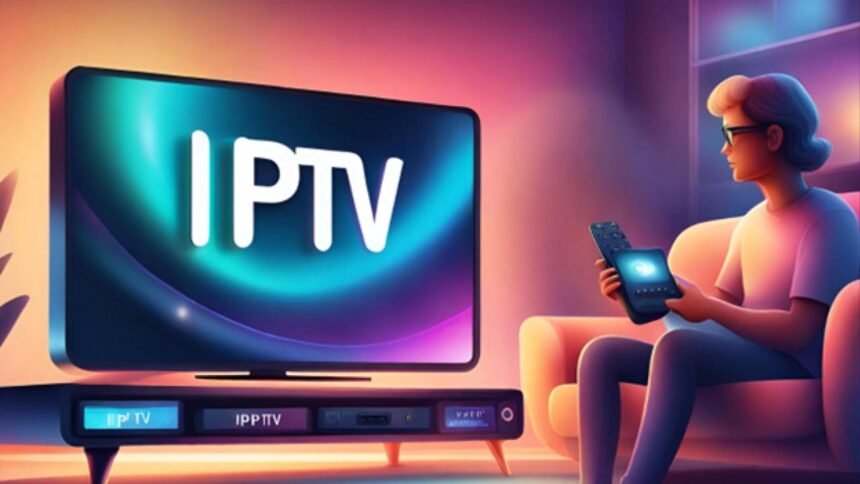Introduction
As technology evolves, the way we consume media changes drastically. One of the most significant shifts in recent years has been the rise of IPTV (Internet Protocol Television). This technology has transformed how we watch television, offering a more personalized and flexible viewing experience. With the ever-growing demand for on-demand content and the convenience of streaming, IPTV is rapidly becoming the preferred choice for viewers worldwide. This article delves into the latest trends in IPTV and explores how this technology is shaping the future of television.
The Evolution of IPTV
IPTV represents a significant departure from traditional cable and satellite television. Unlike conventional broadcasting, which sends signals through the airwaves, IPTV uses the internet to deliver content. This change in delivery method has opened up new possibilities for both service providers and consumers. The flexibility of IPTV allows viewers to watch their favorite shows anytime, anywhere, using a variety of devices, including smart TVs, smartphones, and tablets. This evolution has led to a surge in demand for IPTV services, as more people seek to cut the cord and embrace the freedom that internet-based television offers.
Key IPTV Trends Shaping the Future
As IPTV continues to gain popularity, several key trends are emerging that are set to shape the future of television technology. These trends reflect the growing importance of personalization, interactivity, and content diversity in the IPTV landscape.
Personalized Viewing Experiences
One of the most significant trends in IPTV is the shift towards personalized viewing experiences. With IPTV, viewers can customize their content according to their preferences, creating a tailored television experience. This trend is being driven by advanced algorithms that analyze viewing habits and suggest content based on individual tastes. As this technology continues to improve, we can expect even more precise recommendations, making it easier for viewers to discover new shows and channels that align with their interests.
Interactive TV and Enhanced User Engagement
Interactivity is another crucial trend in the IPTV industry. IPTV platforms are increasingly incorporating features that allow viewers to interact with content in real time. Whether it’s participating in live polls during a show, chatting with other viewers, or accessing additional information about what’s on screen, these interactive elements are enhancing user engagement and making television a more immersive experience. This trend is likely to continue as service providers explore new ways to keep audiences engaged and invested in their content.
Expansion of On-Demand Content
The demand for on-demand content is one of the driving forces behind the rise of IPTV. Traditional television schedules no longer dictate what viewers watch; instead, IPTV offers a vast library of content that can be accessed at any time. This expansion of on-demand content is not limited to TV shows and movies; it also includes live events, such as sports and concerts, that can be streamed as they happen or watched later at the viewer’s convenience. As the appetite for on-demand content grows, IPTV providers are likely to continue expanding their libraries and offering more diverse programming options.
Integration with Smart Home Devices
Another emerging trend in the IPTV landscape is the integration of IPTV services with smart home devices. As homes become increasingly connected, IPTV is being integrated with other smart technologies, such as voice assistants and home automation systems. This integration allows users to control their television experience through voice commands or automated routines, creating a seamless and convenient viewing experience. As smart home technology continues to evolve, we can expect IPTV to play a more central role in the connected home ecosystem.
Challenges and Opportunities in IPTV
While the future of IPTV looks promising, it is not without its challenges. One of the primary concerns is the issue of bandwidth and network stability. Since IPTV relies on internet connectivity, users may experience buffering or interruptions if their internet connection is slow or unstable. However, as internet infrastructure continues to improve, these issues are likely to become less significant.
Another challenge is the competition in the IPTV market. With so many providers offering similar services, differentiation becomes crucial. Service providers must continually innovate and offer unique features to attract and retain customers. Despite these challenges, the opportunities in the IPTV industry are vast. The growing demand for personalized, on-demand content and the integration of IPTV with smart home devices presents significant growth potential for the industry.
Conclusion
IPTV is revolutionizing the way we consume television content. As the technology continues to evolve, it is expected to offer even more personalized, interactive, and convenient viewing experiences. By staying informed about the latest IPTV trends, viewers and service providers alike can better understand the future of television and the opportunities that lie ahead. Whether you’re a tech enthusiast or simply looking for a better way to watch TV, IPTV represents the future of home entertainment. Embrace the change and explore the exciting world of IPTV today.
